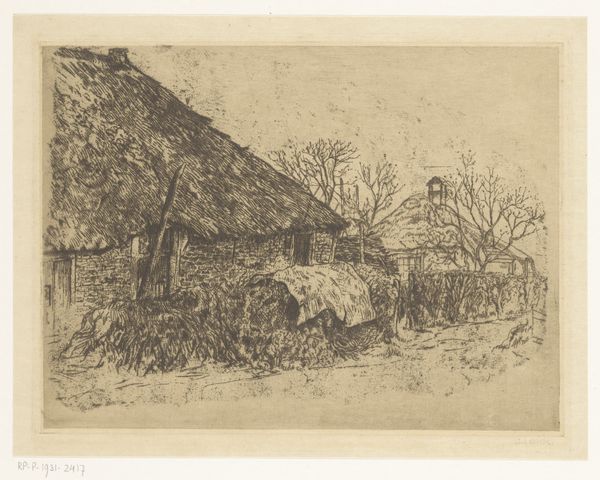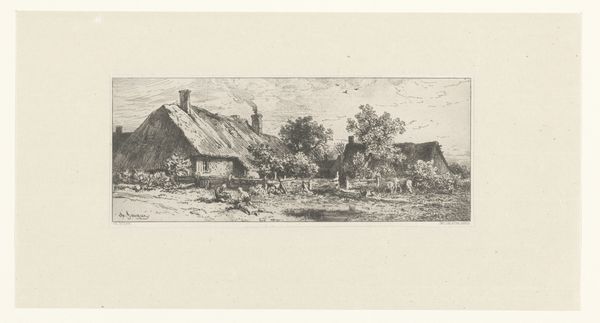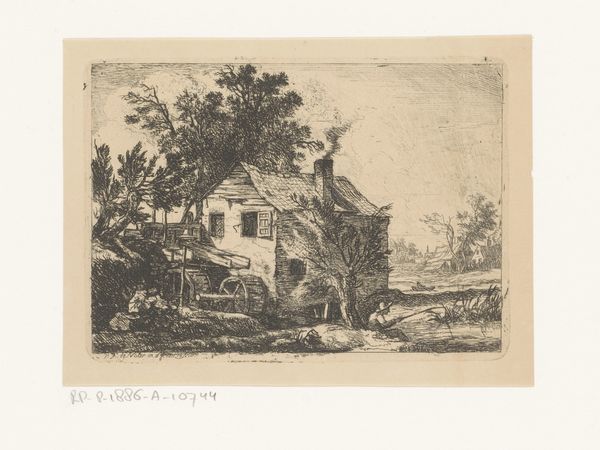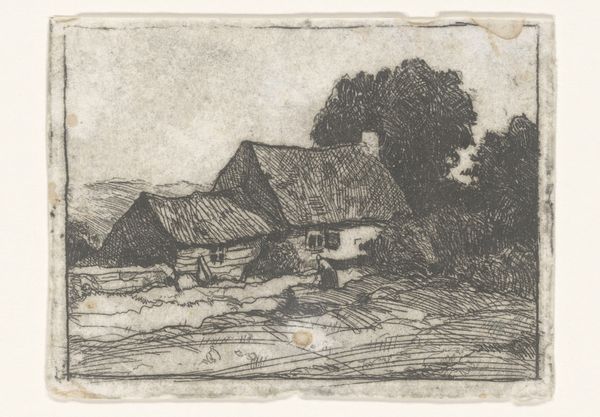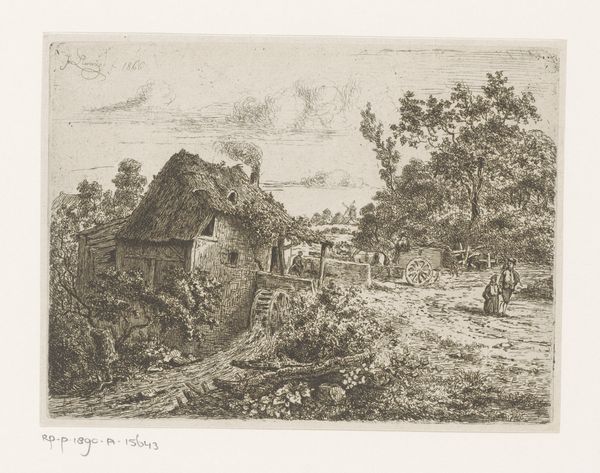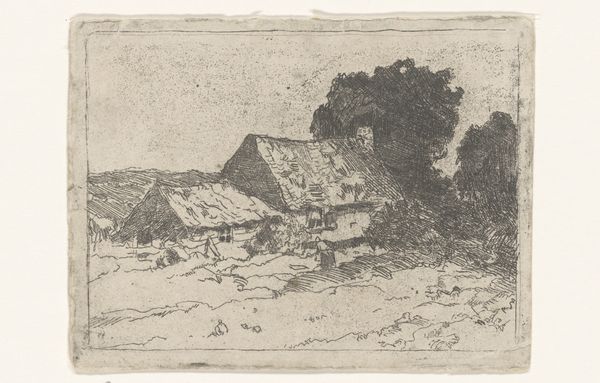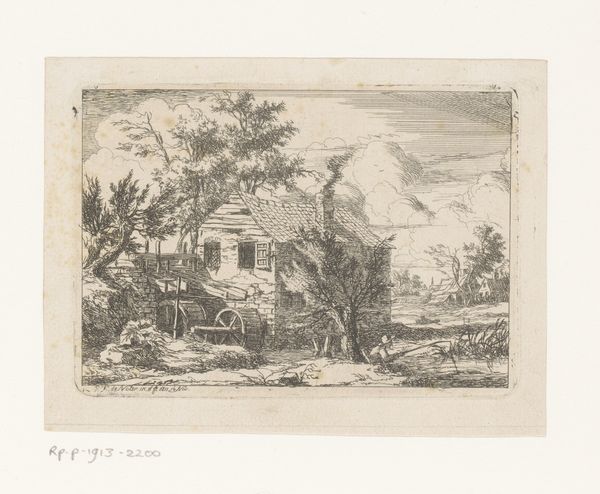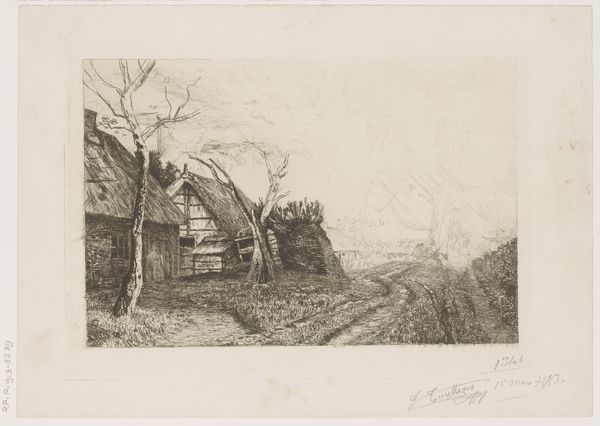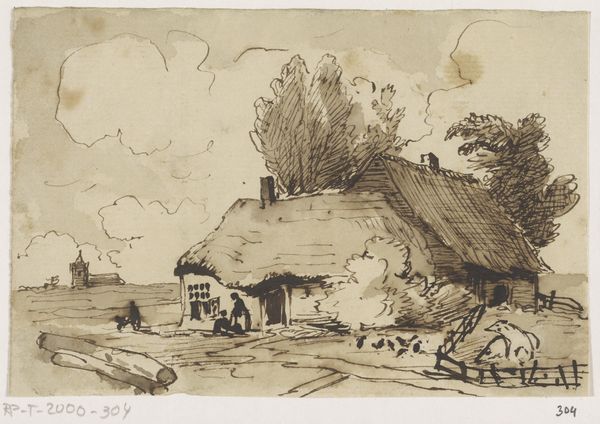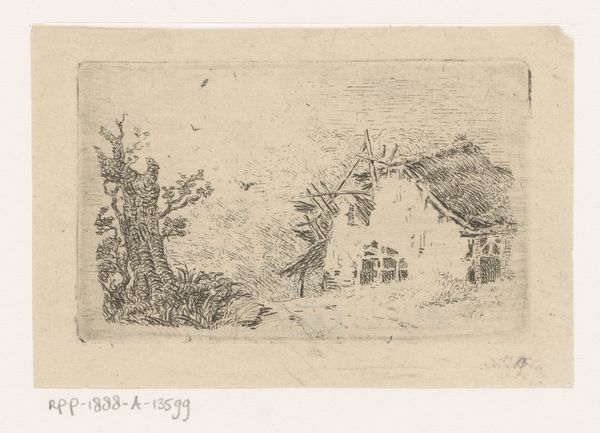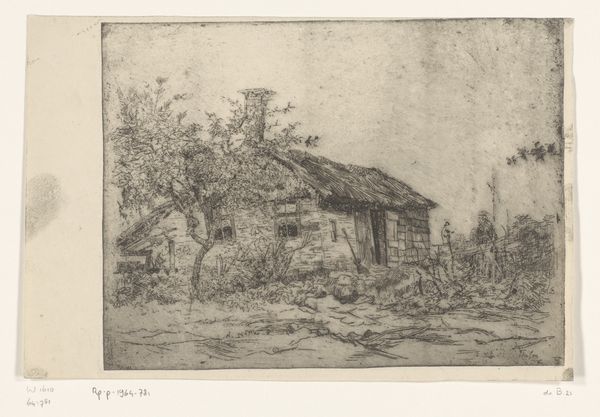
drawing, print, etching
#
drawing
#
dutch-golden-age
# print
#
etching
#
landscape
Dimensions: height 85 mm, width 153 mm
Copyright: Rijks Museum: Open Domain
Editor: So, this etching by Chris van der Windt, titled "Twee huizen en een schuur," or "Two Houses and a Barn," dates between 1887 and 1952 and it’s currently at the Rijksmuseum. There’s something quite somber and rural about the scene… almost austere in its simplicity. What do you see in this piece, in terms of the symbols and meaning the artist conveys? Curator: This image vibrates with the visual language of the rural. See how the thatch roof seems to droop? The artist evokes a sense of enduring existence, perhaps even of lives lived close to the earth. Consider also how the bare trees contrast with the structures. How does that opposition inform the piece’s overall mood, in your view? Editor: It’s stark. Almost like the buildings and nature are in a silent, weathered dialogue. But the houses, they're presented as more permanent than the foliage. Why etching, do you think? Does the medium contribute something specific? Curator: Absolutely. Etching allows for incredible detail, almost a miniaturist's touch. That intimate scale speaks to the small moments and the personal stories contained within these buildings. Etching as a medium allowed the democratization of art as many prints could be pulled and sold. Think of it as the blogs and websites where art and images now can reach an even wider audience. Editor: That’s interesting; the etching feels like it connects this remote place to a wider world of viewers. I hadn’t considered how the choice of a reproducible medium creates such an interesting bridge. Curator: And notice, in contrast to our age, how the deliberate mark-making draws our eye. Each line invites scrutiny. It allows us to engage with the image and the artist’s intentions. That sustained attention asks us to dwell on the symbolism longer. How does your attention change depending on how much or how little details are apparent? Editor: I agree! Thinking about that forces me to acknowledge what I *don't* know. It’s a wonderful puzzle that celebrates humble subjects. Curator: Precisely! I'll think I’ll carry that with me too.
Comments
No comments
Be the first to comment and join the conversation on the ultimate creative platform.
